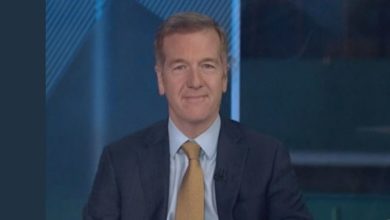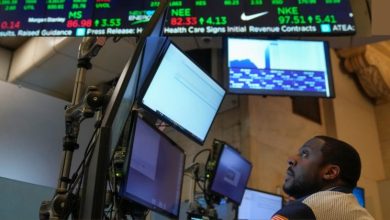Goldman Sachs Predicts Gold Prices Can Hit $5000 Per Ounce, on Deteriorating Federal Reserve Independence, Rate Cuts

Gold futures have surged to record highs above $3,600 per ounce, with Goldman Sachs predicting the precious metal could reach $5,000 if just 1% of private U.S. Treasury investments shifted to gold. As Federal Reserve rate cuts loom, financial experts remain divided on whether gold represents a smart investment opportunity or an overvalued speculation.
Record Performance and Goldman Sachs Projections
Gold prices have climbed approximately 40% year-over-year, reaching an all-time high of $3,673.95 on Tuesday before settling near $3,648 per ounce Friday. The metal has posted four consecutive weekly gains and risen 39% this year, making it one of the best-performing asset classes globally.
Goldman Sachs forecasts gold could reach $4,000 per ounce by mid-2026 under normal market conditions, with the potential for $5,000 if even modest Treasury market funds migrate to precious metals. UBS analyst Giovanni Staunovo similarly projects $3,900 per ounce by mid-next year, citing exchange-traded fund inflows and economic tailwinds.
Economic Drivers Behind the Rally
The surge reflects multiple economic pressures converging simultaneously. Recent data showing 911,000 fewer jobs created over the past year than initially reported, along with rising unemployment claims, has reinforced expectations for Federal Reserve rate cuts beginning September 17.
Simultaneously, consumer prices posted their sharpest monthly gain in seven months during August, creating the complex scenario of slowing employment alongside persistent inflation. This combination typically benefits gold, which thrives in lower interest rate environments while serving as an inflation hedge.
Central bank demand has also contributed significantly to price appreciation. Banks worldwide are diversifying away from U.S. dollars and Treasuries, creating secular buying pressure that experts expect to continue long-term.
The Case for Gold Investment
Proponents emphasize gold’s role as portfolio insurance during uncertain times. Jonathan Rose of Genesis Gold Group argues that “physical gold, secured in a vault, provides a form of financial insurance that is increasingly valuable and sought after in today’s unpredictable environment.”
Robert Minter of Aberdeen Investments notes that central banks are driving much of the current demand through diversification efforts, creating what he views as a sustainable trend. Justin Cardwell of Alternative Options recommends a modest 10% commodity allocation, including gold, as markets face inflation and growth concerns.
Brett Elliott of American Precious Metals Exchange emphasizes gold’s safety profile: “Stocks and bonds can both go to zero. If a company goes out of business or defaults on its debt, you can lose everything you’ve invested. But gold will always have value — it will never go to zero.”
The Case Against Gold Investment
Critics highlight fundamental limitations that make gold unsuitable as a primary investment vehicle. Alex Michalka of Wealthfront explains: “Unlike stocks or bonds, gold doesn’t have any cash flows associated with it, and thus isn’t an investment in the same way. Buying gold is merely betting that the price will go up.”
Eric Croak of Croak Capital is more blunt: “Gold does not generate cash flow. It does not have a yield. It does not pay interest. It does not pay a dividend.” He advocates limiting gold to 3-5% of portfolios as insurance rather than growth vehicle.
Thomas Winmill of Midas Funds goes further, suggesting “most investors put none of their portfolio into gold in bullion form” due to negative returns from storage and insurance costs, recommending gold mining stocks instead.
Tax and Practical Considerations
Several experts note that gold faces higher tax rates than traditional investments, with physical gold often treated as a collectible for tax purposes. Additionally, physical gold involves storage costs, insurance, and liquidity challenges that ETF-based investments can avoid.
For investors choosing gold exposure, many recommend ETFs over physical ownership. Minter notes that “for many investors, investing via an ETF is more efficient, less expensive and offers more liquidity” while maintaining professional custody and regular auditing.
Allocation Recommendations
Among supporters, allocation suggestions remain modest. Most recommend limiting gold to 3-10% of total portfolios, viewing it as diversification rather than core holding. The specific allocation depends on investor age, risk tolerance, and overall financial situation.
Younger investors might justify higher allocations to capture long-term appreciation potential, while older investors requiring income should emphasize smaller positions focused on stability and inflation protection.
Market Outlook and Risks
Current market dynamics suggest continued support for gold prices through 2025. Persistent inflation concerns, geopolitical tensions, and unprecedented sovereign debt levels create an environment where precious metals may continue attracting investors seeking alternatives to traditional assets.
However, gold’s volatility remains significant. While often considered a safe haven, it can experience substantial price swings that exceed high-quality bonds. Recent price appreciation may also reflect speculative excess rather than fundamental value.
Federal Reserve Impact
The upcoming Federal Reserve decision carries major implications for gold’s trajectory. Markets have fully priced in a 25-basis-point rate cut, with reduced expectations for larger moves. Lower rates typically benefit gold by reducing the opportunity cost of holding non-yielding assets.
President Trump’s pressure for aggressive rate cuts and attempts to influence Fed personnel, including efforts to remove Governor Lisa Cook, add political uncertainty that could further support precious metals demand.
The debate over gold investment ultimately reflects broader questions about portfolio construction in an era of economic uncertainty, persistent inflation, and evolving monetary policy. While gold has delivered impressive returns recently, its role as either speculation or insurance depends largely on individual investor circumstances and risk tolerance.




